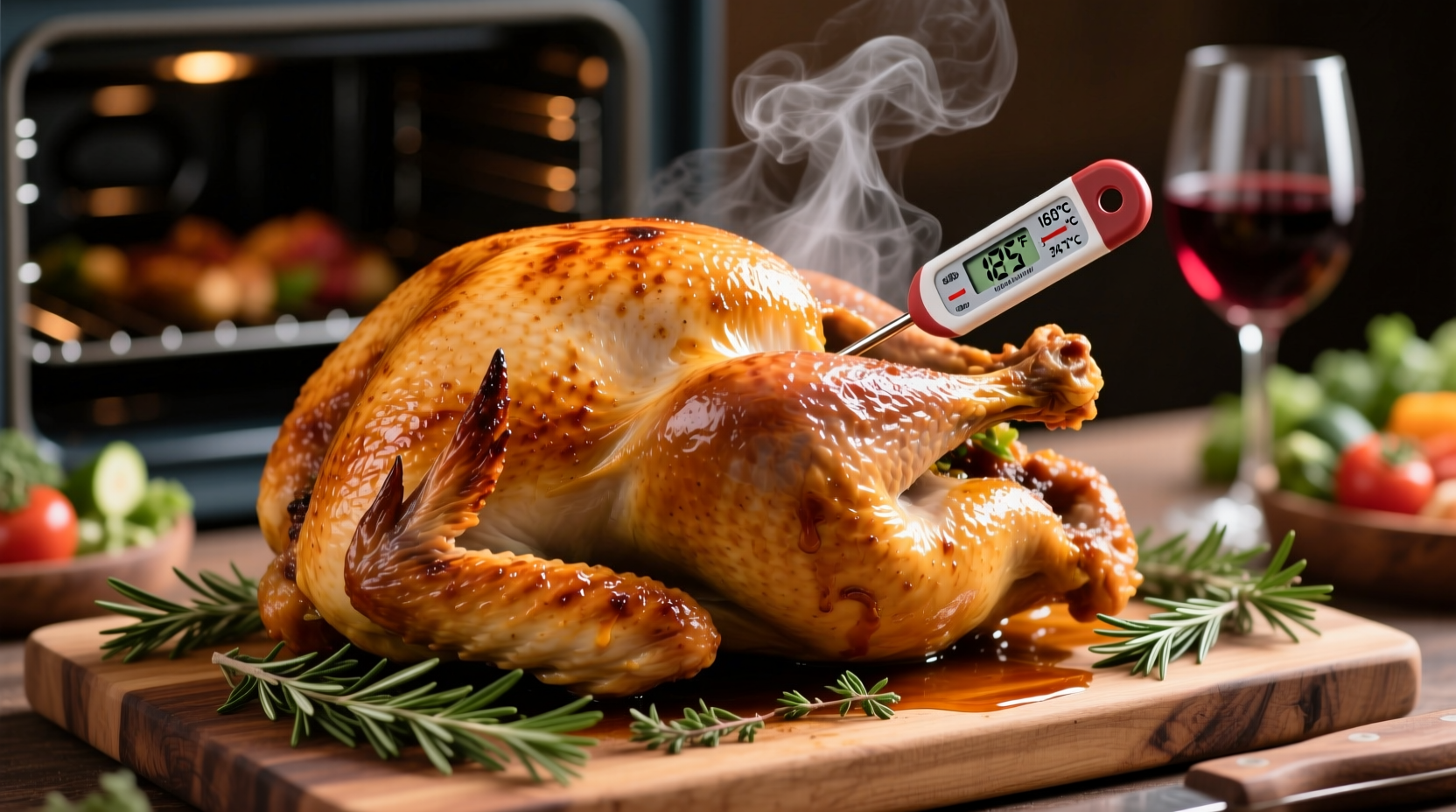The safe minimum internal temperature for cooked turkey is 165°F (73.9°C) as measured with a food thermometer in the thickest part of the breast, thigh, and wing. This temperature destroys harmful bacteria like salmonella while preserving juiciness when followed with proper resting techniques.
Nothing ruins a holiday feast faster than serving undercooked turkey or dry, overcooked meat. Getting the temperature right isn't just about flavor—it's a critical food safety requirement that prevents foodborne illness. With Thanksgiving and holiday seasons approaching, understanding the precise temperature guidelines ensures your turkey is both safe to eat and perfectly moist.
Why 165°F Is the Gold Standard for Turkey Safety
For decades, food safety authorities have refined turkey cooking recommendations based on extensive research into pathogen destruction. The USDA Food Safety and Inspection Service established 165°F as the minimum safe temperature after determining this threshold reliably eliminates Salmonella and Campylobacter—bacteria commonly found in poultry.
| Temperature Threshold | Bacterial Destruction | Historical Recommendation |
|---|---|---|
| 150°F (65.6°C) | Requires 3.7 minutes for complete destruction | Pre-1990s (with extended hold time) |
| 160°F (71.1°C) | Requires 14.8 seconds for complete destruction | 1990s-2006 |
| 165°F (73.9°C) | Instant pathogen destruction | Current USDA standard (since 2006) |
This evolution reflects improved understanding of bacterial death rates at various temperatures. The current 165°F standard provides an immediate safety margin without requiring precise timing—a crucial factor for home cooks managing multiple dishes.
Measuring Temperature Correctly: Avoiding Common Mistakes
Over 40% of home cooks make critical errors when checking turkey temperature, according to CDC food safety surveys. Follow these professional techniques:
- Use the right thermometer: Digital instant-read thermometers provide accuracy within ±1°F, while dial thermometers can vary by ±2-4°F
- Check multiple locations: Measure the innermost part of the breast, the inner thigh, and the wing joint—never touching bone
- Avoid false readings: Keep thermometer probes away from fat pockets or gristle which register higher temperatures
- Verify calibration: Test your thermometer in ice water (32°F/0°C) or boiling water (212°F/100°C at sea level) before use

Understanding Temperature Variations Across the Bird
Turkey parts cook at different rates due to varying fat content and muscle density. While the universal safety standard remains 165°F, professional chefs often remove turkey from heat when:
- Breast meat reaches 160°F: White meat continues cooking during resting to reach 165°F while staying moist
- Thigh meat hits 165°F: Dark meat requires the full temperature for safety and optimal texture
- Wings register 165°F: Often the last area to reach safe temperature
This technique leverages carryover cooking—the 5-10°F temperature rise that occurs during resting. Removing turkey when breasts hit 160°F prevents the lean meat from drying out while ensuring safety.
Resting Time: The Critical Final Step
Many home cooks skip resting, but this 20-30 minute period serves two vital functions:
- Temperature equalization: Heat redistributes from hotter outer areas to cooler interior sections
- Juice retention: Muscle fibers relax, reabsorbing juices that would otherwise spill out when carving
Cover loosely with foil during resting—trapping too much heat can cause overcooking. For turkeys over 12 pounds, extend resting to 30-40 minutes.
When Lower Temperatures Might Be Acceptable (With Caveats)
Modern cooking techniques like sous vide allow precise temperature control at lower settings, but require strict protocols:
- Sous vide method: Holding turkey breast at 145°F for 30+ minutes achieves pasteurization while maximizing juiciness
- Required conditions: Must maintain exact temperature for specified time; not suitable for whole birds due to uneven heating
- Important limitation: This approach requires specialized equipment and isn't recommended for novice cooks or large gatherings
For conventional oven roasting—which represents 95% of home turkey preparation—the USDA's 165°F standard remains the only reliably safe method.
Troubleshooting Temperature Issues
If your turkey hits 165°F too early: Tent with foil and reduce oven temperature to 250°F until other dishes are ready. Check every 15 minutes to prevent overcooking.
If parts remain under 165°F: Return turkey to oven, checking every 5-7 minutes. Focus heat on cold spots using a convection setting or rotating the pan.
When in doubt: Use the "juice test" as secondary verification—piercing the thigh should release clear (not pink) juices, though thermometer verification remains essential.
Essential Tools for Perfect Turkey Temperature
Invest in these temperature management tools:
- Dual-probe thermometer with remote monitoring (prevents constant oven opening)
- Oven thermometer to verify actual oven temperature
- Instant-read thermometer for spot checks
- Insulated resting pan to maintain heat during standing time











 浙公网安备
33010002000092号
浙公网安备
33010002000092号 浙B2-20120091-4
浙B2-20120091-4